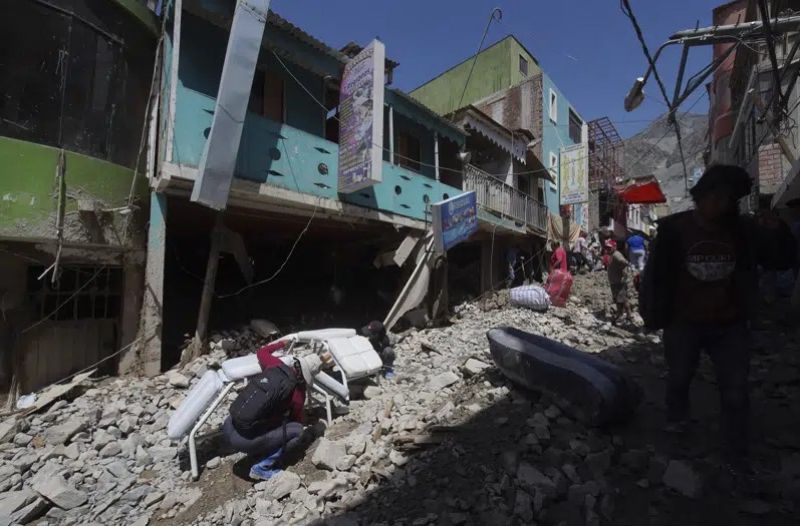- Fourth Palestinian baby freezes to death in Gaza amid winter crisis |
- Prof Yunus to focus on digital health, youths, ‘Three Zeros’ |
- Who’re back in the race? EC clears 58 candidates for Feb polls |
- 8 workers burnt in N’gan Akij Cement factory boiler blast |
- Ex-Shibir activist shot dead in Fatikchhari |
Mudslides smash villages in Peru; at least 12 confirmed dead

Residents of five small gold-mining villages in southern Peru’s Arequipa region struggled Tuesday to salvage belongings after landslides caused by strong rains killed at least 12 people and dragged mud, water and rocks that turned precarious homes and other buildings into rubble.
In the Mariano Nicolás Valcárcel municipality, on the edges of a depleted mining extraction area in Camaná province, people desperately searched for anything they could salvage amid the mud.
One of them was Mauro Noa, a community leader in the Posco Miski village who has been trying to reach local leaders to obtain first aid and food to help more than 1,000 of his neighbors who have been stuck on the side of a mountain since Sunday and are unable to leave due to the accumulation of mud and rocks.
“They're hungry and thirsty,” Noa said. “Nobody thinks about them.”
Noa said this is the first time in 18 years he has seen a landslide of this magnitude and neighbors have compiled a list of 14 Posco Miski residents whose whereabouts are unknown. “The neighbors who couldn’t leave their houses were taken by the wave of mud,” Noa said. “Children have been left traumatized by the rain and the landslide.”
Law enforcement has sent 15 rescue workers to the area and they were expected to arrive in Secocha late in the afternoon because the road has blocked by mud, police officer Giancarlo Vizcarra said.
Vizcarra said that after they arrive in Secocha the rescue workers will try to get to the most remote villages to search for bodies that may be buried under the mud with the help of two dogs that have been trained to search for people after earthquakes.
A local Civil Defense official said Monday that at least 36 people had died in the landslides, but on Tuesday a prosecutor told The Associated Press they had confirmed only 12 deaths and three people were listed as missing.
The landslides destroyed key access roads into the remote villages, making it difficult to confirm the death toll. Peru's government had yet to release any official numbers, although the president traveled to the affected area Tuesday.
The slides that began Sunday and continued Monday from the highest mountains in the area destroyed everything in their path.
People were helpless and could only watch as the mud and rocks swept away their homes in the five villages, where miners have been living for two decades.
Dramatic video from the region showed people covered in mud being dragged out of the mud.
Many people slept outside out of fear that more slides might come.
“We’re isolated,” Arturo Muñoz, who lives in La Eugenia, where the landslides began Sunday, told The Associated Press by phone.
The full extent of the damage remained unknown as rescue workers were unable to get heavy machinery into the area.
The main road in the small village of Secocha was covered by a muddy sludge that seemed to be everywhere and had pushed through doors and windows. Residents were working feverishly to clean mud out of their belongings, including kitchens, refrigerators and televisions.
The prosecutor in charge of the incident, Luis Supo, reported the lower death toll Tuesday. A day earlier, Wilson Gutiérrez, a Civil Defense official from the Mariano Nicolás Valcárcel municipality, told local media that 36 bodies had been recovered in the remote village of Posco Miski.
Supo said that by Tuesday authorities had received the remains of only 12 people.
Officials said Monday that the landslides had also affected bridges, irrigation channels and roads. Around 630 homes were no longer usable, officials said.
Heavy rains are frequent in Peru in February and they sometimes help spark landslides, reports UNB.
.

